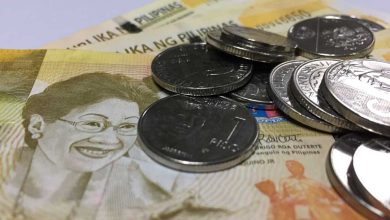Cooling down with hot Thai food

THERE’S NO going around it: it’s hot. We’re experiencing summer temperatures into the high thirties, and it feels like 40+, and it feels like punishment. Luckily, the Waldorf Astoria in Bangkok lent out its Thai chef, Akkawin “Pun” Pitrachart to its Hilton sister property in the Philippines, Conrad Manila to help cool down customers at its buffet, Brasserie on 3.
Eating hot food to cool down sounds like an oxymoron, but Southeast Asian knowledge will tell you otherwise. Almost every Asian country has a supremely spicy dish meant to be eaten to cool oneself down.
A study by Bain, Lesperace, and Jay* says: “Under conditions permitting full sweat evaporation, body heat storage is lower with warm water ingestion, likely because of disproportionate modulations in sweat output arising from warm-sensitive thermosensors in the esophagus/stomach. Local temperature changes of the rectum following fluid ingestion exacerbate the previously identified error of thermometric heat storage estimations.” In other words, the body retains less heat when ingesting something with more heat. The scientists in the study based that deduction on warm water’s effects on the body, but perhaps we can use the same logic with spicy food.
Mr. Pitrachart believes that as well. In his native Thailand, “The weather is so hot. People there eat the street food, and they sweat a lot. They drink water — it’s very refreshing,” he said. “We sweat a lot, and it makes us more cool, after we sweat.”
During a tasting on April 12 at Conrad Manila, we of course tried Thai classics like Pad Thai; but also new tastes (for us, at least) like Deep-fried seabass in sweet chili sauce, Braised beef in Massamun Curry, and Stir-fried Minced Pork with Chilis and Northern Peppers. We liked the wok-fried assorted vegetables, also spicy, and definitely cooling. We were struck by the Thai sausages and the roast beef (we did not know that they had a sausage and roasting culture in Thailand). The sausage was very complex, and the roast beef was simple and eager to please. Mr. Pitrachart said that the sausage had galangal, kaffir lime, and chilies, while the roast beef was roasted for six hours (not very simple), and marinated in fish sauce, soy sauce, and sugar (simple).
It’s easy to dismiss Thai cuisine as nothing more than tongue burners, but Mr. Pitrachart, a native, urged us to explore more flavors of Thailand. “We have a complexity of spiciness in Thailand,” he said, comparing Southern Thai cuisine (hotter) with Northern Thai (with which he is more familiar). “It makes you numb, a little bit,” he said about the north’s taste profile, akin to the Chinese mala taste, derived from Szechuan peppercorns. But more than spic-iness, the other prominent flavor in Thai food is saltiness, which he owes to fermented shrimp, which is powdered and mixed in curries and sauces, or else their own version of fish sauce. Comparing their brown liquid with ours, he said, “It’s different. The saltiness, and the flavor; the smell.”
Guests can enjoy Brasserie on 3’s Thai-inspired buffet at a rate of P2,337.50 net per person for lunch (11 a.m to 2:30 p.m) and P2,592.50 net per person for dinner (6 p.m to 10 p.m), available daily until April 30. For inquiries, call 8833-9999, e-mail conradmanila@conradhotels.com or visit https://eatdrinkhilton.com/brasserie-on-3-conrad-manila/.
*“Body heat storage during physical activity is lower with hot fluid ingestion under conditions that permit full evaporation,” A. R. Bain, N. C. Lesperance, O. Jay, 2012 — Joseph L. Garcia




